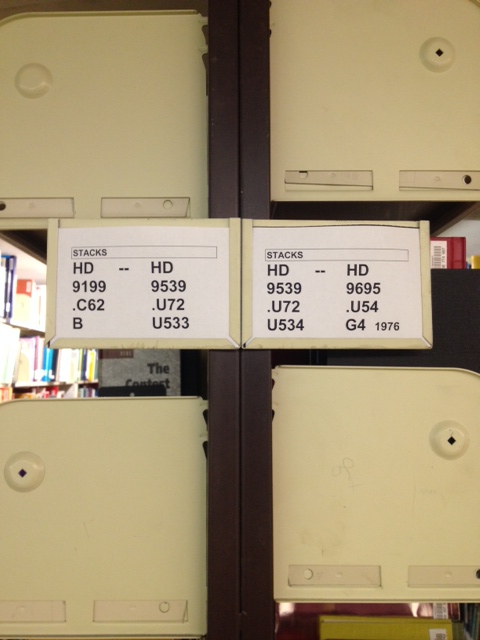 Shelving
Shelving
Shelving a book is simply putting that book back where it belongs using the appropriate classification system.
When shelving you need to pay close attention to what you’re doing. When a book is misshelved, it is lost until it’s replaced or someone finds it, which could be days or decades!
Please take into account the following when shelving:
- Shelve in a critical manner. Pay close attention to where you are when shelving. Are the surrounding books on the same subject? Are the surrounding books in the correct order?
- Please note that all books marked “Ref.” on the spine belong in the reference area. A “Ref.” book should never go in the circulating stacks area; likewise, a book for the circulating collection should never go in the reference stacks. These are the most commonly mixed up books, but also be mindful of books marked oversized.
- Read/Use more than one call number as a reference when shelving. Shelf read while shelving to ensure you are in the correct spot. Shelf read three books before and three books after where you think the book should go.
- The beginning and the end of each shelf are the most common spots where mistakes happen. If you are shelving a book that you think should go at the beginning of a shelf, be sure to check the end of the shelf that precedes it.
- Always handle and shelve books properly. Never pull a book off the shelf by tugging at the top of the spine. Grasp each book by the middle and pull gently. Items that cannot be shelved in an upright position should be shelved with the spine resting against the shelf bottom. Shelving a book face-down causes strain on the binding.
- Strive to leave the stacks in better order than they were when you arrived for your shift. If a library user cannot find an item because it has been miss-shelved, the library may as well not own it. The effect is the same - the user cannot obtain access to the material.
- Edging books is a very simple part of stack maintenance. Pull the books close to the edge of the shelf and even out the row. To ensure that the books are easily accessible to other patrons, it is good to edge them so that the patron can easily see the call number and spine title of the book. Also look for books that have been pushed behind rows.
- Remember to space the books correctly on the shelf. There should be sufficient room on each shelf to accommodate the end brace and extra space for book re-shelving. Sometimes a shelf looks almost empty. This can be because many books from that shelf are in use, but often it is the result of haphazard re-shelving. Each collection varies in how much shelf room it has for all of its books, but just remember to leave an even amount of space at the end of every shelf--usually about 1/4 of the total shelf space. Do not crowd shelves or cramp books!
- Crowded areas. When there is no room to shelve a book, the book will need to be scanned into "Overflow" and shelved in the overflow location.
